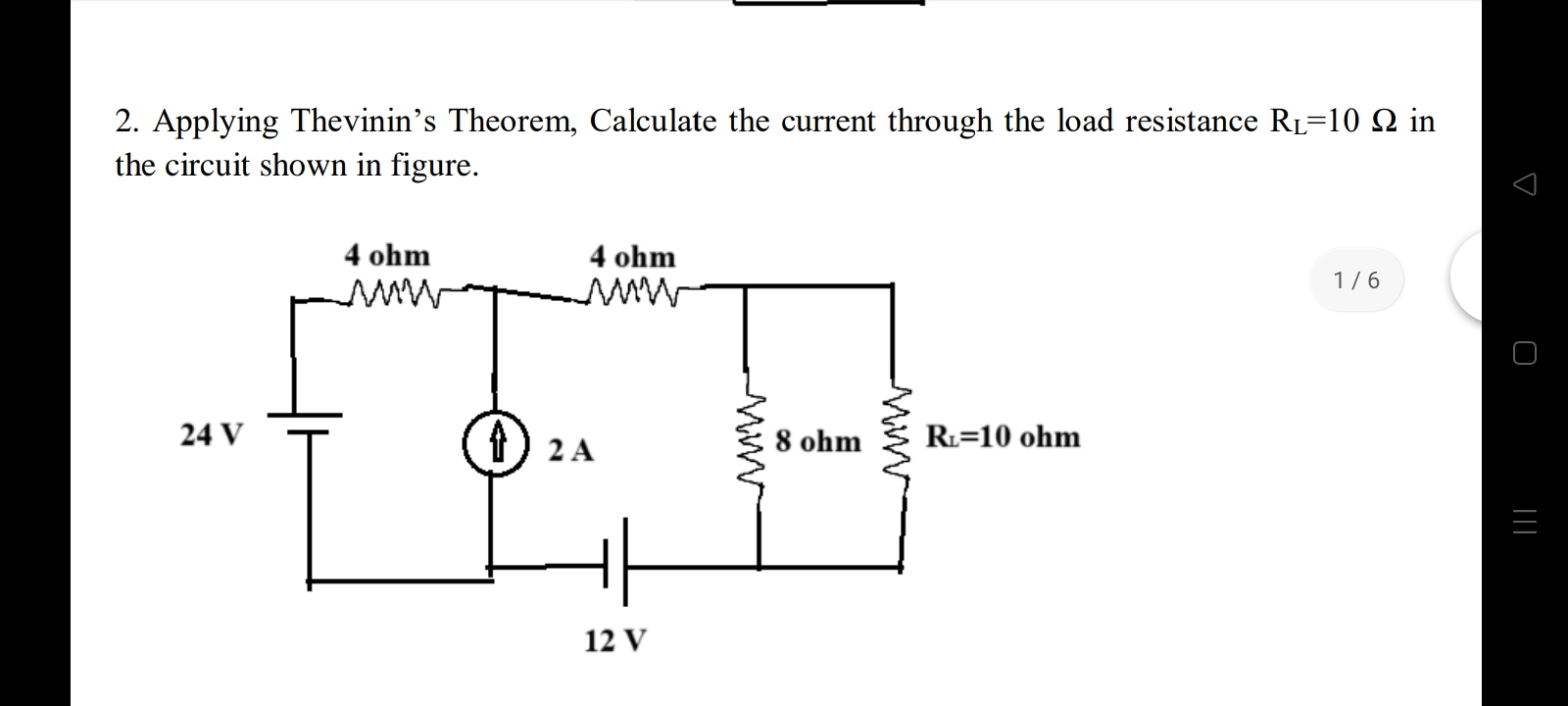Applying Thevinin’s Theorem, calculate the current through the load resistance R_L=10 ohm in the circuit shown in figure.

Understand the Problem
The question is asking to apply Thevinin's Theorem to the given electrical circuit to calculate the current flowing through the load resistor R_L, which has a resistance of 10 ohms.
Answer
The current through the load resistor $R_L=10 \, \Omega$ is $I = \frac{V_{th}}{R_{th} + R_L}$.
Answer for screen readers
The current flowing through the load resistor $R_L=10 , \Omega$ is $I , \text{A}$.
Steps to Solve
- Identify Thevenin Equivalent Voltage ($V_{th}$)
To find $V_{th}$, remove the load resistor $R_L$ (10 ohms) and calculate the open-circuit voltage across its terminals. Analyze the remaining circuit with the 24 V source and the current source.
- Calculate Thevenin Equivalent Resistance ($R_{th}$)
To find $R_{th}$, deactivate all independent sources (replace the 24 V voltage source with a short circuit and the 12 V source with a short circuit). Calculate the equivalent resistance seen from the terminals of the load resistor $R_L$.
- Apply Thevenin's Theorem
Now that we have $V_{th}$ and $R_{th}$, replace the original circuit with a single voltage source $V_{th}$ in series with a resistance $R_{th}$ and $R_L$.
- Using Ohm's Law to Find Current ($I$)
Calculate the total current flowing through the load resistor $R_L$ using the formula:
$$ I = \frac{V_{th}}{R_{th} + R_L} $$
Substituting the values of $V_{th}$ and $R_{th}$ into the equation will give the current $I$ through $R_L$.
The current flowing through the load resistor $R_L=10 , \Omega$ is $I , \text{A}$.
More Information
Thevenin's Theorem simplifies complex circuits into a simple equivalent circuit with one voltage source and one resistor, making it easier to analyze circuits with resistive loads.
Tips
- Forgetting to deactivate independent sources when calculating $R_{th}$.
- Not taking into account parallel and series configurations correctly.
AI-generated content may contain errors. Please verify critical information